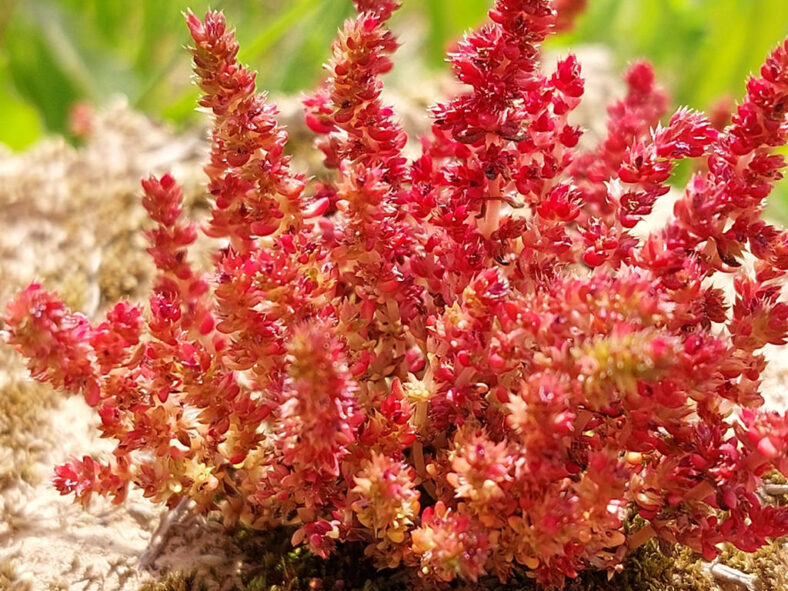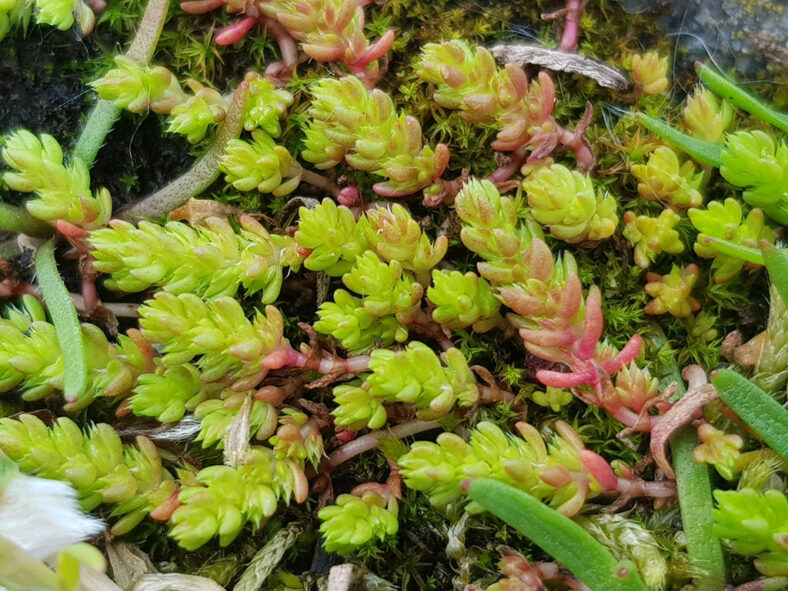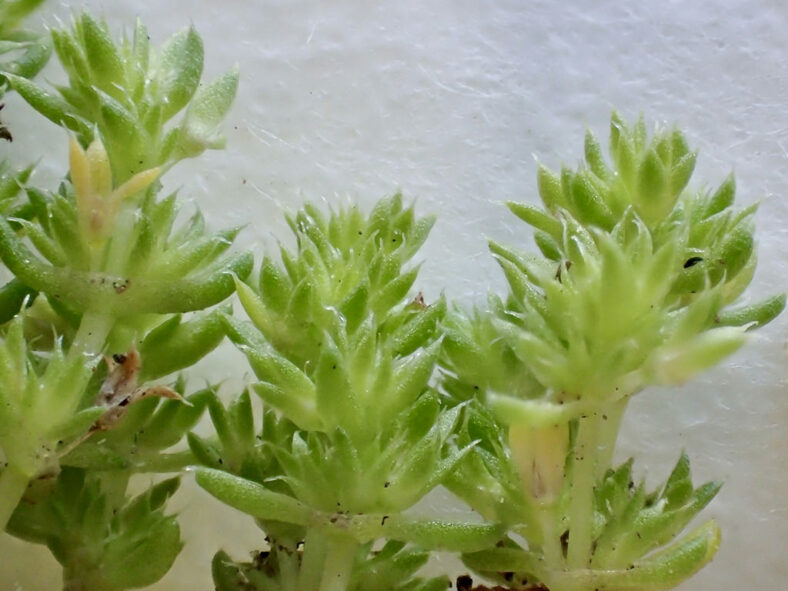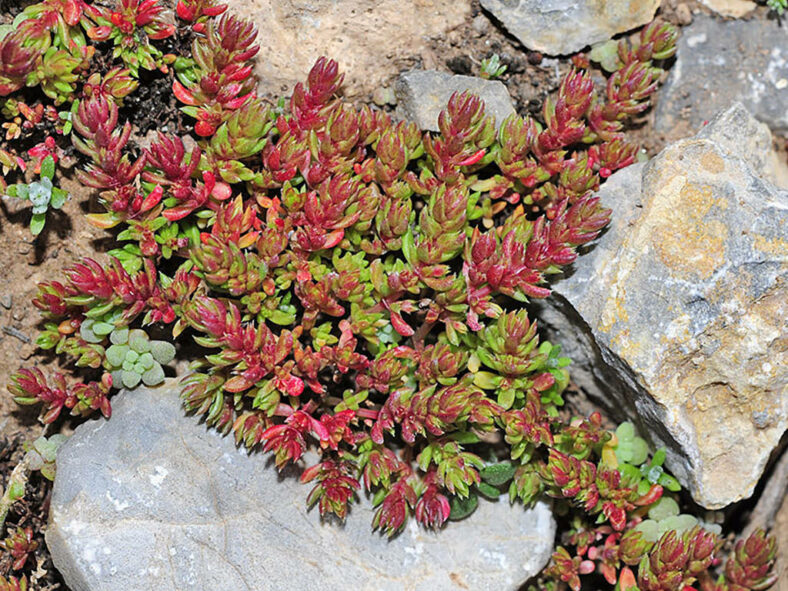Crassula tillaea is a colorful, low-growing plant that is hard to find in cultivation.
Scientific Name
Crassula tillaea Lest.-Garl.
Common Name(s)
Moss Pygmyweed, Mossy Stonecrop
Synonym(s)
Crassula muscosa, Sedum tillaei, Tillaea muscosa, Tillaea procumbens
Scientific Classification
Family: Crassulaceae
Subfamily: Crassuloideae
Genus: Crassula
Etymology
The specific epithet "tillaea" (pronounced "TIL-lay-uh") honors Michelangelo Tilli or Michele Angelo Tilli (1655-1740), an Italian physician and botanist.
Origin
Crassula tillaea is native to Eurasia, particularly the Mediterranean Region. It grows in open, gravelly, sandy, or loamy, seasonally wet ground on the sides of roads and ditches.
Description
Crassula tillaea is an annual succulent plant with simple or often branching stems and tiny, crowded, triangular leaves. The stems can be erect, prostrate, or ascending and grow up to 2.4 inches (6 cm) long. The new leaves are green but gradually turn deep red as they mature. They are opposite, oblong with a pointed tip, and can measure up to 0.15 inches (0.3 cm) long.
During spring, tiny flowers or small clusters appear in the axils of nearly all the leaves. They usually have three, sometimes four, whitish petals and sepals the same color as the leaves. The sepals are longer than the petals. The fruits are tiny ovoid follicles containing one or two seeds.

Crassula tillaea has an annual growth cycle, which means it grows, flowers, produces seeds, and dies within a single season. However, it self-propagates by scattering seeds that grow into new plants.
This plant is native to the Mediterranean Region but has also been introduced to other regions, such as North America and South America. It typically grows in open, gravelly, sandy, or loamy, seasonally wet ground on the sides of roads and ditches and occasionally on field margins. It can be found at elevations ranging from sea level up to 1,310 feet (400 m).
Learn more at How to Grow and Care for Crassula.
Toxicity of Crassula deltoidea
Crassula tillaea is non-toxic and considered safe for people and pets.
Links
- Back to genus Crassula
- Succupedia: Browse succulents by Scientific Name, Common Name, Genus, Family, USDA Hardiness Zone, Origin, or cacti by Genus
Photo Gallery
Click on a photo to see a larger version.


